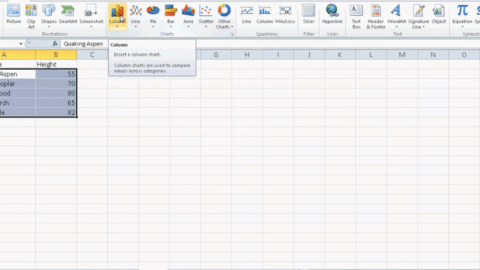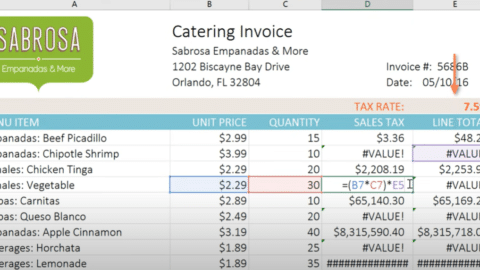Excel is a powerful tool used by businesses and individuals to manage and analyze data. One of the most common tasks in Excel is comparing two columns to identify their differences and similarities. Excel is a powerful tool millions worldwide use for organizing, analyzing, and manipulating data. One of the most common tasks in Excel is to compare two columns to find differences or similarities between them. In this article, we will cover various methods to compare two columns in Excel, including conditional formatting, VLOOKUP, and IF function.
Table of Contents
Using Conditional Formatting to Compare Two Columns in Excel
Conditional formatting is a useful feature in Excel that highlights cells based on certain conditions. This feature can be used to compare two columns and highlight their differences or similarities.
To use conditional formatting to compare two columns in Excel, follow these steps:
- Select the cells you want to compare. For example, if you want to compare column A and column B, select both columns.
- Go to the Home tab and click on Conditional Formatting.
- Select “Highlight Cells Rules” and then “Duplicate Values”.
- In the Duplicate Values dialog box, select “Unique” or “Duplicate”, depending on whether you want to find unique values or duplicates.
- Choose the formatting options, such as font color or fill color, and click OK.
Using VLOOKUP to Compare Two Columns in Excel
VLOOKUP is a powerful function in Excel that can be used to search for a specific value in a table and return a corresponding value. This function can also be used to compare two columns in Excel.
To use VLOOKUP to compare two columns in Excel, follow these steps:
- Create a new column next to the two columns you want to compare.
- In the new column, enter the following formula: =VLOOKUP(A1,B:B,1,FALSE)
- A1 is the cell in the first column you want to compare.
- B:B is the range of cells in the second column you want to compare.
- 1 means you want to return the first column in the range (B:B).
- FALSE means you want an exact match.
- Copy the formula down to the other cells in the new column.
- Filter the new column to show only the rows where the values are different.
Using IF Function to Compare Two Columns in Excel
The IF function in Excel can be used to perform logical tests and return different values based on the result of the test. This function can also be used to compare two columns in Excel.
To use IF function to compare two columns in Excel, follow these steps:
- Create a new column next to the two columns you want to compare.
- In the new column, enter the following formula: =IF(A1=B1,”Match”,”No Match”)
- A1 is the cell in the first column you want to compare.
- B1 is the cell in the second column you want to compare.
- Copy the formula down to the other cells in the new column.
- Filter the new column to show only the rows where the values are different.
Step 1: Open Excel and Load Data
To compare two columns in Excel, you first need to open the program and load the data you want to compare. Also, you can do this by opening a new workbook or an existing one and navigating to the sheet that contains the data you want to compare.
Step 2: Select the Columns to Compare
Once you have loaded your data, you need to select the columns you want to compare. You can do this by clicking on the first column you want to compare and dragging your mouse to select the entire column. Then, hold down the Ctrl key and click on the second column you want to compare to select it as well.
Step 3: Use Conditional Formatting to Highlight Differences
Excel has a powerful conditional formatting feature that can be used to highlight the differences between two columns. To do this, select the cells you want to apply conditional formatting to and navigate to the “Home” tab. Click on the “Conditional Formatting” button and select “Highlight Cell Rules” > “More Rules.” In the “Format Cells” dialog box, select “Custom Format” and enter the formula “=A1<>B1” (assuming A1 and B1 are the first cells in the columns you want to compare). Then, choose a format to highlight the differences and click “OK.”
Step 4: Use Excel Formulas to Identify Differences
Excel also has several built-in formulas that can be used to identify differences between two columns. One of the most commonly used formulas is the “IF” function. To use this formula, enter the formula “=IF(A1=B1,””,”Different”)” into a cell and drag it down to the end of the column. This formula will compare the values in cells A1 and B1 and return the word “Different” if they are not the same.
Step 5: Use Excel’s Data Comparison Tools
Excel has several built-in data comparison tools that can be used to identify and highlight differences between two columns. One of the most powerful tools is the “Data Validation” feature. Select the cells you want to compare and navigate to the “Data” tab to use this feature. Click on “Data Validation” and select “Data Validation” again from the drop-down menu. Also, in the “Settings” tab, select “List” from the “Allow” drop-down menu and enter the values from the second column you want to compare in the “Source” box. Then, click “OK” to close the dialog box. Any values in the first column that do not match the values in the second column will be highlighted.
Step 6: Clean Up Your Data
Before you compare two columns in Excel, it is important to ensure that your data is clean and consistent. This will help you avoid errors and inaccurate results. You can clean up your data by removing duplicates, formatting data correctly, and using consistent naming conventions.
Conclusion
Comparing two columns in Excel can be challenging, especially when dealing with large datasets. However, it can be done quickly and efficiently with the right tools and techniques. Comparing two columns in Excel is a common task that can be easily accomplished with various methods. Also, one way to do this is to use the “IF” function and other logical operators to create a formula that compares the values in each cell of the two columns. Another option is to use Excel’s built-in “Conditional Formatting” feature to highlight any differences between the two columns.
Moreover, if you want to compare two columns side-by-side, you can use the “VLOOKUP” function to find matches between the two columns and return the corresponding values. Alternatively, you can use the “MATCH” function to locate the position of a specific value in one column and then use the “INDEX” function to retrieve the value from the corresponding position in the other column.
Furthermore, it is important to note that before comparing two columns in Excel, you should ensure that the data in both columns is formatted consistently and correctly. This can involve removing any leading or trailing spaces, converting text to numbers, or using the “Text to Columns” feature to separate data into different columns based on a specific delimiter.
In conclusion, whether you need to compare two columns in Excel for data analysis, reconciliation, or other purposes, several methods can help you achieve your goal efficiently and accurately. Also, using appropriate transition words can make your writing more cohesive and easy to follow, helping your audience better understand your ideas and instructions.
FAQ About Compare Two Columns in Excel
Q: What is the purpose of comparing two columns in Excel?
A: Comparing two columns in Excel can help you identify similarities or differences between sets of data, which can be useful for data analysis, reconciliation, or other purposes.
Q: What are some methods for comparing two columns in Excel?
A: Some methods for comparing two columns in Excel include using the “IF” function, conditional formatting, the “VLOOKUP” function, the “MATCH” function, and other formulae.
Q: Can Excel automatically compare two columns and highlight differences?
A: Yes, Excel has a built-in “Conditional Formatting” feature that can be used to highlight any differences between the values in two columns.
Q: What should I do before comparing two columns in Excel?
A: Before comparing two columns in Excel, you should ensure that the data in both columns is formatted consistently and correctly, which can involve removing any leading or trailing spaces, converting text to numbers, or using the “Text to Columns” feature.
Q: Can I compare more than two columns in Excel?
A: Yes, you can compare more than two columns in Excel using similar methods to those used for comparing two columns. You can use the “IF” function, conditional formatting, or other formulae to compare multiple columns.
Hello, I’m Cansu, a professional dedicated to creating Excel tutorials, specifically catering to the needs of B2B professionals. With a passion for data analysis and a deep understanding of Microsoft Excel, I have built a reputation for providing comprehensive and user-friendly tutorials that empower businesses to harness the full potential of this powerful software.
I have always been fascinated by the intricate world of numbers and the ability of Excel to transform raw data into meaningful insights. Throughout my career, I have honed my data manipulation, visualization, and automation skills, enabling me to streamline complex processes and drive efficiency in various industries.
As a B2B specialist, I recognize the unique challenges that professionals face when managing and analyzing large volumes of data. With this understanding, I create tutorials tailored to businesses’ specific needs, offering practical solutions to enhance productivity, improve decision-making, and optimize workflows.
My tutorials cover various topics, including advanced formulas and functions, data modeling, pivot tables, macros, and data visualization techniques. I strive to explain complex concepts in a clear and accessible manner, ensuring that even those with limited Excel experience can grasp the concepts and apply them effectively in their work.
In addition to my tutorial work, I actively engage with the Excel community through workshops, webinars, and online forums. I believe in the power of knowledge sharing and collaborative learning, and I am committed to helping professionals unlock their full potential by mastering Excel.
With a strong track record of success and a growing community of satisfied learners, I continue to expand my repertoire of Excel tutorials, keeping up with the latest advancements and features in the software. I aim to empower businesses with the skills and tools they need to thrive in today’s data-driven world.
Suppose you are a B2B professional looking to enhance your Excel skills or a business seeking to improve data management practices. In that case, I invite you to join me on this journey of exploration and mastery. Let’s unlock the true potential of Excel together!
https://www.linkedin.com/in/cansuaydinim/










